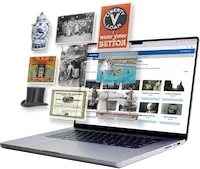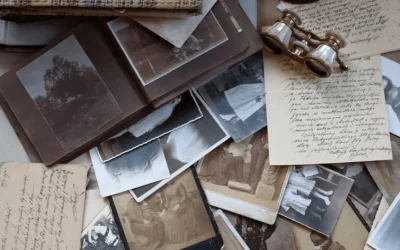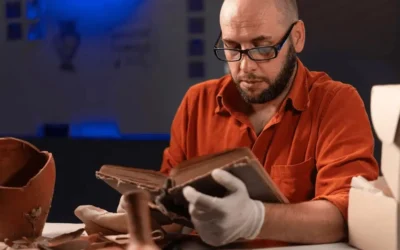How to Conduct Comprehensive Archival Surveys
Margot Note
Conducting a comprehensive archival survey is critical to successfully managing archival collections.
A well-executed survey provides valuable insights into a collection’s content, condition, and preservation needs. Best practices for conducting archival surveys focus on identifying and assessing records.
Planning for Success
Archival surveys begin with careful planning. Archivists should start by defining the survey scope and objectives. What is the purpose of the survey? Which collections or subsets will be surveyed? What specific information needs to be gathered? These questions will guide the planning process and ensure a focused and practical survey.
One potential challenge in the planning phase is accurately estimating the time and resources required to complete the survey. Additionally, archivists may encounter difficulties accessing certain collections due to their physical location or condition. Finally, ensuring that all team members are adequately trained and knowledgeable about different media formats can be a significant hurdle.
Another important aspect of planning is resource allocation. Archivists should assess the resources available for the survey, including staff time, equipment, and budget. Additional considerations, such as software licenses and data storage, may be necessary if the survey involves digital media. Proper planning ensures that the survey can be completed efficiently and within the available resources.
Archivists can conduct a pilot survey on a smaller subset of the collection to accurately estimate the time and resources required for the survey. This preliminary step will provide insights into the time needed for various tasks and identify potential bottlenecks. Additionally, consulting with colleagues who have conducted similar surveys and reviewing case studies or published guidelines can offer valuable benchmarks and best practices for resource estimation.
Identifying and Assessing Formats
One goal of an archival survey is to identify media formats in a collection. This action involves recognizing physical formats, such as paper, photographs, and audiovisual materials, and placing digital formats, such as text files, images, and multimedia. Each media format has unique characteristics and preservation requirements, making accurate identification crucial.
During the survey, archivists should examine the physical and digital media, noting the format, condition, and potential preservation issues. For physical media, this may involve assessing the stability of paper, the condition of photographs, or the usability of audiovisual materials. Archivists should consider file formats, metadata, and potential obsolescence when archiving digital media.
Using Tools for Analysis and Reporting
Various tools and techniques can help identify media formats during an archival survey. For physical media, archivists may use magnification tools, light tables, or specialized equipment to view audiovisual materials. For digital media, software tools such as file format identification software, metadata extraction tools, and digital preservation platforms can help analyze and categorize records.
Archivists should also consider using standardized survey forms or databases to record information consistently. These forms can capture details about the media format, condition, content, and preservation concerns, providing a comprehensive collection overview. Standardized forms also facilitate data analysis and reporting, making it easier to share findings with stakeholders.
Documenting Preservation Challenges
Identifying media formats is the first step; addressing preservation challenges is equally important. Different media formats require different preservation approaches. For example, paper records may need conservation treatments, photographs may require specialized storage conditions, and digital files may need to be migrated to stable formats.
During the survey, archivists should document any preservation issues and prioritize records for intervention. For example, records in deteriorating formats may need immediate attention, while stable records can be scheduled for future preservation activities. A practical approach to preservation ensures that records are safeguarded for future use.
Conducting comprehensive archival surveys is essential for identifying and managing records across various media formats. By following best practices in survey planning, media identification, and preservation, archivists can gain valuable insights into their collections and develop effective strategies for their care. A thorough survey enhances records preservation and supports the broader goals of accessibility and research.
Margot Note
Margot Note, archivist, consultant, and Lucidea Press author, is a regular blogger and popular webinar presenter for Lucidea—provider of ArchivEra, archival collections management software for today’s challenges and tomorrow’s opportunities. Read more of Margot’s posts here.
Never miss another post. Subscribe today!
Similar Posts
Texas Archive of the Moving Image: Interview with the Digital Archivist
I recently interviewed Grace Muñoz about her work at the Texas Archive of the Moving Image. Her work on improving the discoverability of the multimedia collection is fascinating.
Remembering History, Moving Forward Together, with ArchivEra
The Catholic Diocese of Arlington’s Director of Archives selected ArchivEra to manage their collections of historical and cultural significance, and strike a balance between security and access.
Unveiling Archival Impact
The transformative power of storytelling depends upon the strategic choices that top archival performers make and the shift from being record-keepers to change agents.
Effective Measurement of Archival Impact
Effective measurement is the key to assessing the impact of archival endeavors. Archivists play a crucial role in preserving historical records, and their efforts are best evaluated through well-defined benchmarks.





Leave a Comment
Comments are reviewed and must adhere to our comments policy.
0 Comments